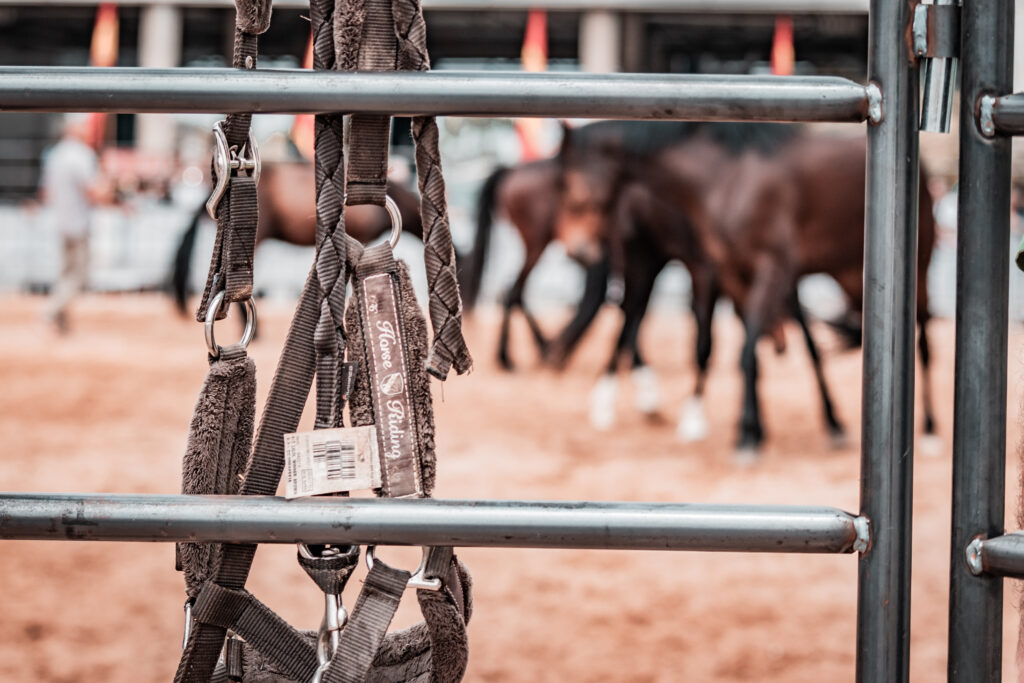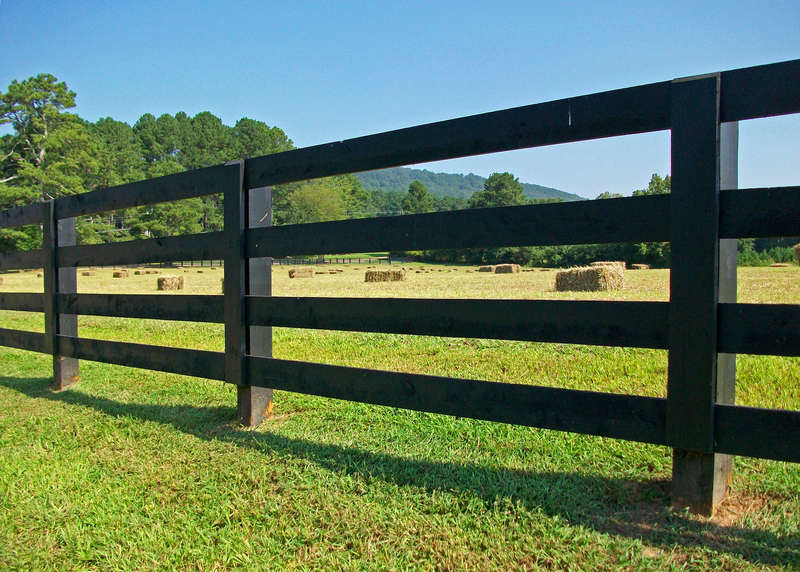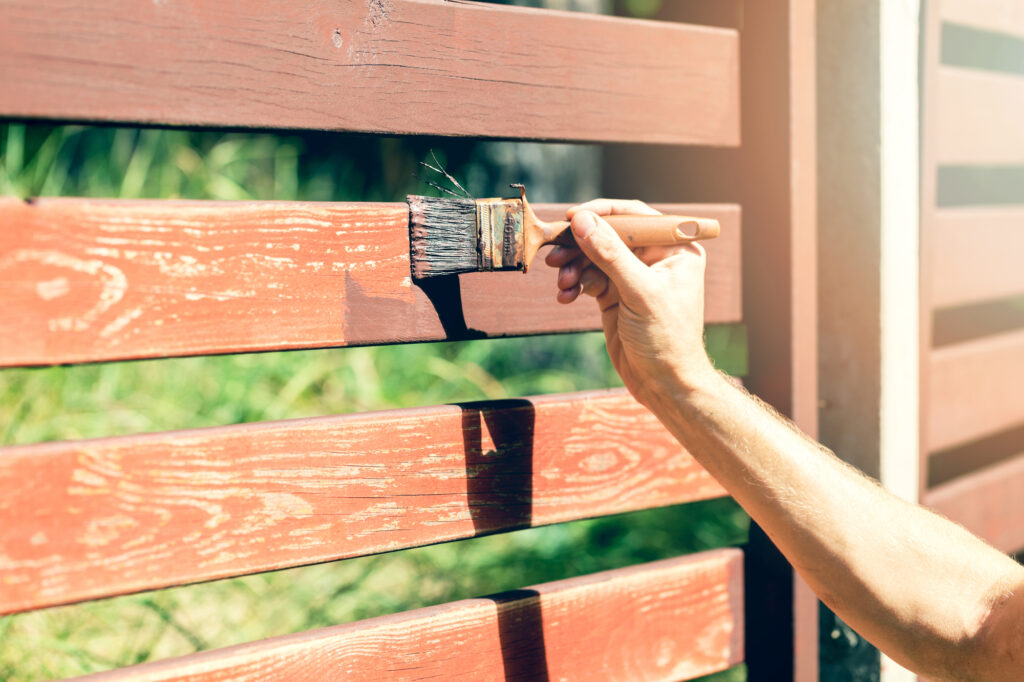
Stock & Noble
How to paint Steel Post and Rail fences on a horse property?
- June 17, 2022
- BY Tripti Kakkar
Have you recently installed Steel Fences on your horse property, or do you want to give a makeover to your old Steel Post and Rail fences? If yes, then this article will make sure you learn the most important steps to follow for the preparation and application of painting your steel fences, resulting in a gorgeous looking property for years to come.
At Stock & Noble, we provide the finest fencing solutions and high-quality paints to premium horse properties across Australia and New Zealand. Our paints are developed after years of research and ensure our partners get the maximum protection and sleekest look for their horse fences.
By the end of this article, you’ll understand the different types of Steel Post and Rail Fencing options and the 4-step process to paint Steel Post and Rail Fences:
- Preparation
- Choosing the right paint
- Applying the paint
- Recoating
So, you can decide which type you have and what you must do to paint them the right way.
Types of Steel Post and Rail fencing
There are two types of steel fencing prevalent in Australia and New Zealand: Steel Pipe Fences and branded steel fences.
Steel Pipe fences are seen across rural properties and sourced from steel companies by fencing contractors. These fences are galvanised and bear the look of steel. They need to be painted to be protected from rust and corrosion and improve their looks.
Branded steel fences are Buckley Steel Fence by Stock & Noble, Post and Rail by Dunn and Farrugia and Toprail by Blue Dog Fences. While they differ in horse safety and other parameters, as far as paint is concerned, they are all powder coated and there’s no need to paint them. All they might need is a touch up with spray paint when hit hard enough with equipment or hard objects.
So, if you have any branded Posts and Rails on your property, you can skip reading this article.
For those with Steel Pipe fences, dive in to learn the best way to make your fences look fabulous.
Steps to paint Steel Fences in Australia and New Zealand.
Step 1: Preparation
Whether you want to paint recently installed brand-new fences or repaint your old Steel Posts and Rails, preparation is an equally critical step for both.
How do I prepare New Steel Fences for painting?
New coated or ungalvanised fencing should be allowed to weather for at least one month before applying paint.
The most important thing before painting steel is to completely remove the oil. When Cattle Rail or Steel Pipe fences are delivered on-site, they have a layer of oil on the surface. There are a couple of ways to get the grease off your fences:
- If you let your Steel Post and Rail fences weather for 3 to 4 months, wind, rain and sun will wash up the surface well. Then you can simply waterblast the fence and this should be sufficient to remove the oil and clean the steel completely.
- Another option is to use a citrus cleaner or hot soapy water, made with sugar soap. You can physically wash the Steel Fences yourself or ask the Painting Contractor to do it for you.
In new steel fences, the joints where the steel is welded together, the layer of galvanising gets compromised, that’s why those welded areas usually have cold galvanising paint on to protect them from rusting. You do not need to paint these areas with primer if this has already been done.
How do I prepare Old Steel Fences for painting?
The first thing that needs to be checked before painting Steel Posts and Rails is rust.
Rust is a known enemy of steel and tends to break it down if not treated well. So, take a good look at your fence and wire buff any problem areas where rust is showing its teeth. If it’s sunk deep into some bits of your steel fence, you might need to replace these parts, or a very good coating of cold galvanising may help slow down the rusting process. In some cases of lightly rusted areas, Anti Corrosive Zinc Prime can be used followed by the top 2 coats of paint.
If mould and fungus is present, use the appropriate moss and mould killer and follow application directions.
Once the rust and mould are taken care of, you must water blast the entire fence, followed by a wash down with clean water if you’re using concentrate moss and mould killer, and your steel fences are ready to be painted.
Step 2: Choose the right paint
While paint doesn’t like heat, Steel absolutely loves it. It absorbs heat and makes it difficult for the paint to stick and stay.
Therefore, you need a higher quality paint with more paint solids than Timber fence paints. It should be carefully picked to ensure there’s no room for error. Typically, Steel paints are also costlier than Timber paints. For example, Forever Black Steel is the best and the most expensive black fence paint in our Master Blend line up. It has more paint solids than any other black Timber fence paint and the longest life of over 10 years.
A few things that you must consider while buying paint for your Steel Post and Rail fences are:
1. Self-Primer
Unlike Timber, Steel fences cannot absorb the moisture of the paint which helps the paint to stick to the surface.
So, you must buy a paint that has a self-primer additive in the mix. If your fence paint does not have this additive, then you need to get a Steel Priming product, coat your fence with it first and then apply paint over it. It’s best to check the manufacturer’s recommendation on your paint packaging for the use of a primer.
2. Anti-Rust Additive
We all know that steel is prone to rust. Paints with an Anti-Rust additive are highly effective in protecting your steel fences by combating any rust that starts evolving on the fence.
Step 3: Application of paint on Steel Fences
Once you have prepared and chosen your paint, it’s critical to choose the right kind of day to paint – a nice, pleasant one. Whatever you do, don’t apply it on a hot, sunny day.
The surface of steel fences gets terribly hot, and paint has no chance of sticking onto it. You simply cannot apply paint on hot metal.
So, wait for a better day and make sure the surface is clean, dry, rust-free and oil-free.
The perfect temperature to apply the paint is within 10°C to 40°C.
The steps of painting are as follows:
- One coat Primer (depending on manufacturer’s recommendation) If lightly rusted, apply Anti Corrosive Zinc Primer
- Stir paint thoroughly with flat-bladed stirrer (stir+lifting action)
- Apply paint (with brush, speed brush roller, or airless sprayer)
- We recommend a spray gun + hiring a professional. Or using a narrow nozzle (airless tip size of 0.013” or 0.015” at 1500 to 2000 psi.)
Applying Paint with Water-based Master Blend Paints
Water-based Master Blend Paints do not require thinning before application.
However, it may be necessary to thin the paint if you are using an air compressor-driven pot sprayer. Approximately 5% water can be used to thin the paint, without affecting the longevity or warranty of the product.
You can also choose to add Hot Weather Additive to slow down the drying time allowing for easy and smooth application of paint.
Step 4: Recoating
Once the first coat is applied, it takes approximately two hours to dry up.
Before you recoat the Cattle Rail fences, make sure the previous coat has completely dried up. The drying time of the second coat is around 3 hours.
With Master Blend Paints, we advise a coat of Primer on certain surfaces and two coats of paint application. You must always check the manufacturer’s recommendation on the packaging of the fence paint you’re using.
Are you clear and confident to paint your Steel Post and Rail fences?
In this article, you learned what type of Steel Fence needs painting and the 4-step process to paint your fence.
Now, you have a better idea of what painting Steel Post and Rail fences entails. We know it’s difficult to paint Steel fences, but if you follow the steps laid out for you, the results will be well worth it.
When applied perfectly, the paint adds an added protection to galvanised steel and doesn’t let weather break it down. Also, the brilliantly painted Steel Fences lift the look of your entire horse property.
If you have more questions on what the best way is to paint your Steel Fences and which Fence paint you should choose basis your need, type of fences and budget our fencing experts are there to help you. You can connect with them and book a complimentary personalised consultation They will understand your requirement and offer the best painting solution for your horse property.



